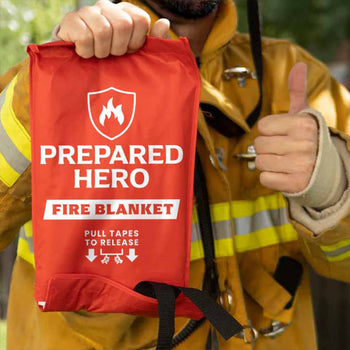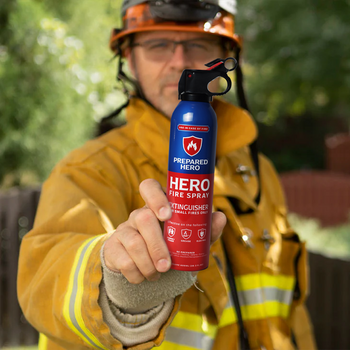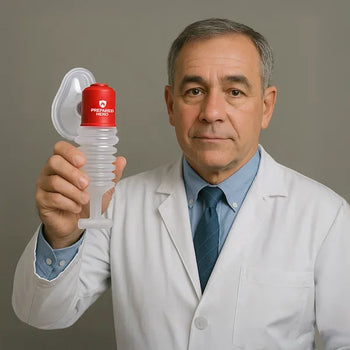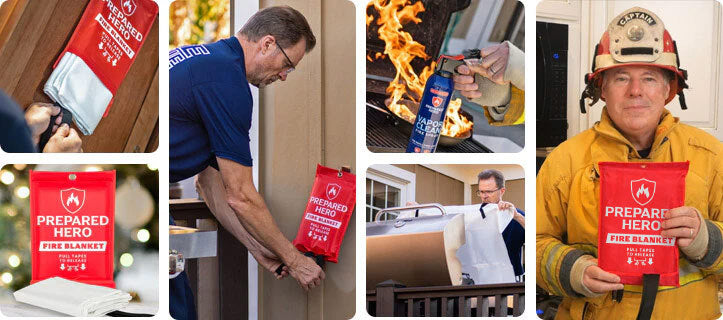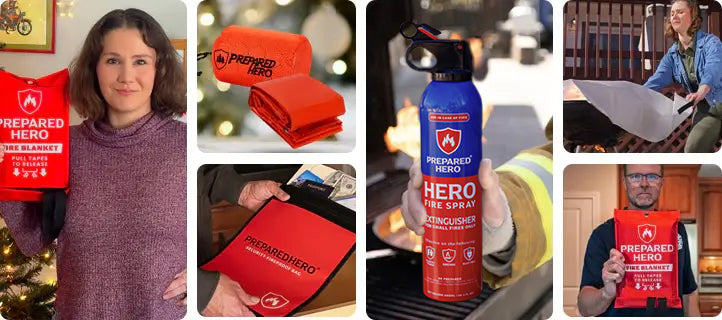Where you put your smoke detectors matters just as much as installing them. Proper placement makes sure they can detect...
Most home fires are caused by cooking. According to the NFPA (National Fire Protection Association), cooking caused an average of 158,400 or 44% of reported home fires in the US per year.
Thankfully, kitchen fire suppression systems help. They’re the first line of defense against kitchen fires. Plus, you must protect your family from kitchen fires. While you can use many types of fire extinguishers to put out fires, prevention is always better than cure.
If you’re new to kitchen fire suppression systems or are looking to install one, this guide will help you learn how they work. We’ll start with an overview of kitchen fire suppression systems, their basic components, and how they keep you safe.
What is a Kitchen Fire Suppression System?

The NFPA states that cooking is the leading cause of home fires. Contrary to popular belief, water makes a grease fire worse. Hence, you need a fire suppression system in your kitchen.
A kitchen fire suppression system protects you against kitchen fires. It acts as the first line of defense against fire in residential and commercial kitchens. Experts usually install this system in the exhaust hood.
In particular, the said fire safety system prevents kitchen fires from spreading to other areas of your house or restaurant. If a kitchen fire occurs, you’ll feel relieved knowing that the flames will be contained.
Hence, a kitchen fire suppression system provides a safe and efficient way to easily extinguish kitchen fires. It puts out the source of most kitchen fires— the cooking surface.
It’s vital that you have a fire suppression system in your kitchen. It should also be updated, so it’ll work as planned.
Most kitchen fire suppression systems connect to your kitchen in two places:
- The hood over your cooking area
- The gas line running through the kitchen
These two connections work to suppress fire efficiently. The one in the hood cuts the fuel, while the other one applies the chemical fire suppressant.
The Basic Components of a Kitchen Fire Suppression System

There are many brands of kitchen fire suppression systems on the market. However, they all feature the same basic components that protect your kitchen from fires.
Here are the basic components of a kitchen fire suppression system:
1. Fire Alarm Panel
The fire alarm panel serves as the brain of the entire system. It monitors every device connected to the system and transfers information between each device.
2. Initiating Device
A fire suppression system in your kitchen either has a manual or automatic initiating device.
Manual devices need to be activated. Systems with manual initiating devices usually come with “pull in case of fire” signs.
On the other hand, automatic initiating devices activate on their own. They can detect physical changes that come with fire, such as heat and smoke.
3. Primary Power Supply
As the term implies, the primary power supply serves as the main source of power for your fire suppression system.
Its supply and backup include batteries, an emergency generator, or another emergency power device.
4. Secondary Power Supply
The secondary power supply will only work if something happens to the primary power supply. It ensures that your kitchen fire suppression system stays up and running even when the power goes out.
5. Notification Devices
As the name implies, these devices notify you when something happens. They usually include strobe lights, fire alarms, and audio devices.
How Does a Kitchen Fire Suppression System Work?
- The system shuts down the fire sources.
- All other sources of power will be cut off.
- The nozzles activate.
- The wet chemicals put out the fire.
- The kitchen hood gets rid of the smoke.

Kitchen fire suppression systems work like fire sprinkler systems. However, there are a few differences between the two.
Suppression systems use wet chemicals to put out fires. On the other hand, sprinkler systems use water.
Just like a sprinkler, a kitchen suppression system activates when they detect certain things. In this case, they do so after detecting flames or excessive heat.
When a fire occurs, the following happens:
1. The system shuts down the fire sources.
Once activated, the system shuts down the electrical source and gas valve. This eliminates the source of the fire.
2. All other sources of power will be cut off.
The system will also cut off the power to outlets and appliances under the hood to get rid of any shocks or sparks that can start another fire.
3. The nozzles activate.
Many kitchen fires, including those caused by burning oil, continue to spread even if the gas dies. For this reason, the fire suppression system has nozzles installed in the kitchen hood.
4. The wet chemicals put out the fire.
The system then expels wet chemical fire suppressant via its nozzles. The suppressant is developed to stop grease fires by covering the flame and depleting oxygen. It also prevents them from reigniting.
5. The kitchen hood gets rid of the smoke.
Lastly, the kitchen hood helps remove smoke from your kitchen.
A kitchen fire suppression system should work quickly, so the fire doesn’t spread. Remember, an efficient system can protect your family and staff.
For added safety, most kitchen hood suppression systems also come with levers. You can pull this down to activate the system if it doesn’t sense the fire early enough.
Benefits of a Kitchen Fire Suppression System

Here are the benefits of using a kitchen fire suppression system:
- A fire suppression system reduces fire damage to your kitchen.
- You can easily clean up after a fire.
- Only your cooking station gets affected.
- The system detects fire for your safety.
- You can prevent other food items from being contaminated.
A kitchen suppression system is a safe and effective way to secure your home’s safety. While fire kits can help, a suppression system ensures that there’s no significant damage to your house.
Plus, it can automatically detect fire, even when you’re not at home. This means less danger to your property. You can save thousands (if not hundreds of dollars) by having one in your kitchen.
1. A fire suppression system reduces fire damage to your kitchen.
From emotional trauma to dealing with insurance agents, you have to deal with a lot once a fire consumes your house.
Installing a kitchen fire suppression system allows you to prevent those things from happening. Along with a complete home fire safety kit with a fire blanket, fire spray, fire protection gloves, and fire mask, of course.
2. You can easily clean up after a fire.
Fire damage cleanup is one of the hardest things to do after a fire. Thankfully, a fire suppression system in your kitchen allows you to minimize the things you have to clean.
Plus, you can cook your favorite dish right away since you don’t have to spend a lot of time cleaning.
3. Only your cooking station gets affected.
With the said system, you’ll only have to clean the cooking area where the fire occurred. The rest of your kitchen will be safe.
You still have to check the dishes and kitchen tools for any form of contamination, though. On the bright side, they can still be used after you clean them.
4. The system automatically detects fire for your safety.
Let’s say that you have to leave your kids with a babysitter only to come back home with a fire. Looks ugly, right?
With a fire suppression system, that doesn’t have to happen. The system will detect the smoke and excessive heat even when no one’s watching. It will then do its thing and cut off the fire at the source.
5. You can prevent other food items from being contaminated.
Medicine and food items easily get contaminated by fire. With a fire hood suppression system, you don’t have to worry about this. Your pantry will always be safe. Plus, you don’t have to spend money on groceries again just because a fire started in your kitchen.
Frequently Asked Questions

What is the fire suppression system in the kitchen called?
A fire suppression system in the kitchen is called a kitchen fire suppression system or kitchen hood fire suppression system. Used in restaurants, commercial kitchens, and home kitchens, the system keeps fires within control. It also puts out fires without cutting off the entire kitchen operation.
What type of fire suppression systems are used in kitchen hoods?
Kitchen hoods use wet chemical fire suppression systems. The wet chemicals put out the fire by producing a layer of foam on the grease. The foam then covers the flame and depletes oxygen. It also stops the fire from reigniting.
What are the two types of fire suppression systems?
The two types of fire suppression systems are engineered and pre-engineered systems. An engineered fire suppression system works by filling the room with gases that suppress fire without hurting humans or equipment. On the other hand, pre-engineered systems work on smaller enclosures or special hazards.
How often should a kitchen fire suppression system be serviced?
A kitchen fire suppression system should be serviced every six months.
Conclusion
As the first line of defense against kitchen fires, having them is an investment that’ll be worth your while.
When used with home safety kits, a kitchen fire suppression system ensures your family’s safety when a fire starts.
Speaking of fire safety kits, Prepared Hero offers a wide range of tools that your kit must have. Go to Prepared Hero and get your fire safety tools now!


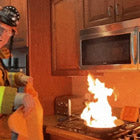 Fire
Fire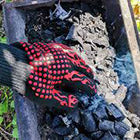 Safety
Safety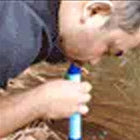 Survival
Survival Protection
Protection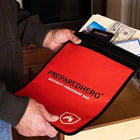 New
New Scouting America
Scouting America
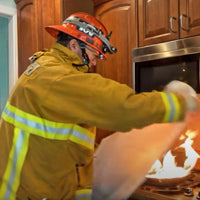 Fire
Fire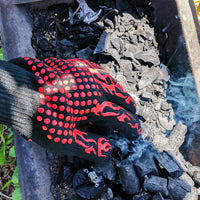 Safety
Safety Survival
Survival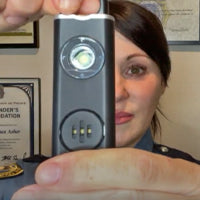 Protection
Protection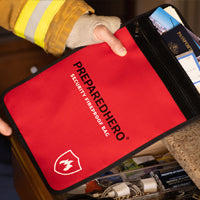 New
New
